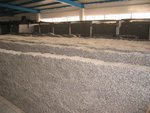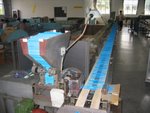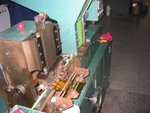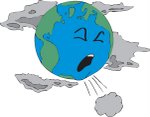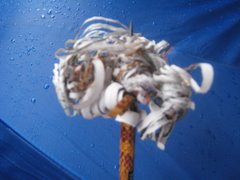There is an interesting article and ever more interesting comments over at
www.penciltalk.org. This article springs from an article about O'BON in the San Francisco State University newspaper about O'BON. You can read this
here. Based on the comments created at penciltalk, I thought it best to way in on the comments. As O'BON is relatively new, many don't know much about us yet. Patience, once they have tried one, they will learn about our many great qualities.
Comments I gave.
I really like this discussion and particularly the article and the comments from Boris. All make for an interesting read.
Please know that the Chinese are the inventor of this process; therefore, this is the reason that the process is not yet in the US. Second, there are a lot of - I mean - a lot of not good recycled newspaper pencils being made in China. O'BON is the biggest and the only one with both ISO 9001 and ISO 14001 certification. Our factory is clean and extremely mindful of the environment. Our byproduct is a newspaper particles produced by grinding the rough edges. This is sucked up and filtered in a tank. The contents of which are put in our garden as mulch. Cool.
Our factory is extremely low on the energy consumption scale in producing pencils. Unlike wood penclis, we have no trees to chop, no wood slates to grind, no hexagonal shapes to made by grinding the woods. Also notice we use no ferrel aluminium - trying to reduce our footprint. We would love to have a discussion about our factory and energy production, waster, impact compared to the wood pencil producers. This is a comparison our plant will win hands down.
People who have used recycled newspaper pencils have come away unhappy doesn't surprise us. Most of the factories producing these pencils are rip offs. Be careful, but O'BON is a brand. As a brand, we are here to stay and are committed to improving our product. We do this by listening to all complaints and especially enjoy engaging in these kinds of debates. O'BON is completely non toxic - we have EN-71 certification (kid toy safe cert) while others will not as they are not a brand.
The issue of whether we are eco-friendly as newspaper comes from trees is an interesting argument. We would contend that the large pencil companies have invested huge amounts of money and resources in reducing bio-diverse forests to produce their sustainable forests. These forests are huge and often primary forest are cut to produce them. This has happened in Brazil, Malaysia, Indonesia and the Phillipines. This maddens me as to tear down a primary forest to create a sustainable forest - and then claim that you are environmental is deception at best. O'BON strives to reduce these sustainable forests and eliminate the practice of making pencils from trees. To us, it seems so old fashioned as there is better technology to make a pencil.
I save the best for last: Why are our pencils better than wood pencils. Some people seem to be incredulous about our claim of lasting 3 times longer. How is this possible? The graphite is the same, the length is the same, what are blatant lie you may think. Let me explain.
Unlike wood pencils which are made by gluing two slates of wood together, O'BON uses newspaper, wrapped tightly. Wood pencil slates are grooved to hold the graphite and then glued tight. There is almost always air gaps in this process. So, as every young student learns, wood pencil graphite easily breaks when dropped. Often it shatters all the way up to the eraser. So when you sharpen such a pencil, the graphite is cracked resulting in breakage. This is so frustrating and an extremely common event. Just ask any child.
Now, take our O'BON pencils. Smash it on the desk. I mean really smash it, over and over and over. Now sharpen it. Wow, not broken. Try this experiment with any wood pencil. In our road shows and exhibition we love to invite people to drop or smash our pencils - they just don't break. Audiences are amazed. (Other recycled newspaper pencils will withstand this punishment, but O'BON pencils will. So, with our superior manufacturing technique - and our exclusive tight roll-on method, our graphite will not crack. Don't believe, buy a box and try it. Now if you snap the pencil in two, the graphite will break as well...Duh!
It is this fact regarding our non-breakable graphite (when pencil is dropped or snapped) that leads us to our claim of lasting longer than wood pencil. We stand by our claim and ask you to investigate.










